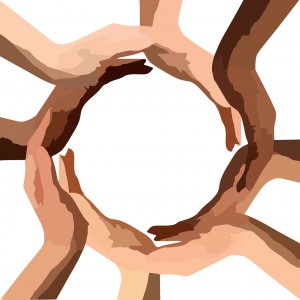
When we are on a good team, we know it. Whether in music, sports, research collaborations or workplaces, there is a mutual learning and synergy that exceeds the sum of the individual parts.
Most of the literature on interprofessional teams, however, still assumes that learning occurs only within individuals; assessments typically measure the attitudes, knowledge or competencies ‘acquired’ by individuals — as if all the learning that occurs in workplaces can be neatly divided among the professionals and transferred to different teams and contexts. Team learning, if it is considered at all, is often treated as a mere sum or aggregate of the individuals’ scores.
My research looks beyond isolated individuals and focuses on the learning that goes on among professionals, their tools, and all the other things and contexts with which they interact on a regular basis. Using complexity science, actor network theory and other “socio-material” approaches to learning, I try to articulate clear and practical ways in which valuable collective or team-level learning may occur. I’ve written about this in a recent article.
This sort of learning happens when team members transform their relationships, interactions, ideas and tools, in ways that make them more effective at their jobs or more aware of their physical and sociopolitical contexts. When team members develop relationships of trust and respect, for instance, they don’t need to waste time micromanaging one another’s work. Interprofessional health teams composed of physicians, pharmacists, nurses and social workers can build on one another’s diagnosis and treatment ideas. This can result in more sophisticated diagnosis and treatment plans—plans that no one person alone comprehends, because they integrate all their diverse professional expertise(s).
When teams incorporate new artefacts, or use them differently, that can also be seen as learning. Tools like patient charts or glucometers that measure patients’ blood sugar, for example, support some kinds of collective knowledge and practices and not others. Their power to shape our thinking and values is increased by the fact that we often take them for granted and see them as ‘neutral’; such materialities are explored in other postings on this blog.
One striking result of the research on “boundary objects” is that ambiguous or plastic artefacts (Heldal, 2009)—that is, artefacts that can mean different things to different professionals—actually enable interprofessional teamwork. Heldal (2009), for example, describes how a diagnosis and treatment form susceptible to multiple interpretations encouraged collaboration, whereas radiology and cytology images, which were subject to only one interpretation, inhibited it.
Finally, a team’s learning may be enacted externally, through how it relates to larger social institutions such as hospitals, professional associations or communities. Successful teams may influence ‘best practice’ beyond their immediate context. Others may become more critically aware of the political and economic forces that shape their day-to-day realities—tensions between patient-centred care and compensation structures, for instance—or begin to question the institutional goals, values, learning imperatives and criteria or metrics by which outcomes are measured.
In contrast to individual ‘acquisition’ of knowledge or competences, team learning can be very difficult to measure. It depends a great deal on local relationships, contexts and history. Several theorists (e.g. Fenwick, 2009) have suggested that what constitutes ‘good’ learning should be evaluated from the perspective of those most affected—in this case, IP teams, patients they serve, and other stakeholders such as family caregivers.
Wenger (2011) has suggested that collective learning might best be appreciated through “value creation stories” that weave together learning indicators such as relationships developed, resources used, and project outcomes. Rather than attempting to define what constitutes valuable learning “in advance in the form of predictable or measurable outcomes”, he writes, one should search for it in activities, negotiations, reflections and meaningful stories constructed from the perspective of those involved (p. 8).
References and Selected Further Reading
Fenwick, T. (2012). Complexity science and professional learning for collaboration: A critical reconsideration of possibilities and limitations. Journal of Education and Work, 25(1), 141-162.
Fenwick, T. (2009). Making to measure? Reconsidering assessment in professional continuing education. Studies in Continuing Education, 31(3)229-244.
Bleakley, A. (2013). Working in “teams” in an era of “liquid” healthcare: What is the use of theory? Journal of Interprofessional Care, 27,18-26.
Bunniss, S. & Kelly, D.R. (2013). Flux, questions, exclusion and compassion: Collective learning in secondary care. Medical Education, 47,1197-1208.
Heldal, F. (2009). Multidisciplinary collaboration as a loosely coupled system: Integrating and blocking professional boundaries with objects. Journal of Interprofessional Care, 24(1), 19-30.
McMurtry, A. (Submitted). More-than-the-sum-of-the-parts: Understanding team learning and how it is enacted. Journal of Interprofessional Care.
Nerland, M. & Jensen, K. (2012). Epistemic practices and object relations in professional work. Journal of Education and Work, 25(1), 101-120.
Simons, B. & Wagner, S. (2009). Assessment of Continuing Interprofessional Education: Lessons Learned. Journal of Continuing Education In The Health Professions, 29(3), 168-171.
Wenger, E., Trayner, B., & deLaat, M. (2011). Promoting and assessing value creation in communities and networks: A conceptual framework. Open Universiteit, Netherlands: Ruud de Moor Centrum.

